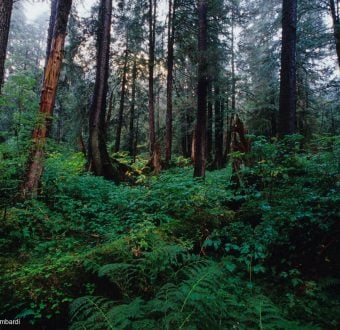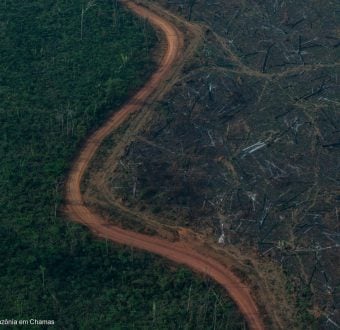Every year, around August, man-made burnings happen in order to clear more forest in the Amazon for ranching and agriculture. Until recently, these burnings had been in the decline, along with a drop in Brazil’s deforestation rate.
However this year, the Brazilian Space Agency INPE, the number of fires spiked 81 percent over the average number of fires between 1999 to the present day. This average includes some years in the 2000s that saw massive deforestation — in which year-to-year forest loss was compared to the size of whole countries.
Ironically, Brazil chose to ratify the Paris Climate Agreement in the middle of this record-worst burning season.

© Rogério Assis / Greenpeace
On the other side of the globe from the fires in Indonesia, the Amazon is burning to the detriment of local populations’ air quality, the health of the largest intact forest on the planet, and the global climate.
Several days ago, my colleagues from Greenpeace Brazil toured the fires to document the destruction, flying a route tracing the hottest parts of the Amazon Burning Season. Most alarming of all was how the fires were taking place in new areas of the Amazon. In the state of Amazonas — which typically has massive amounts of preserved forest — there was a 746 percent increase of fires over the historic average.
Check out this video for what Greenpeace Brazil found flying through the smoldering rainforest.
Why?
Why is this wave of fires happening now after years of success in curbing annual deforestation in the Amazon?
My colleague Cristiane Mazzetti has described several green lights that the Brazilian government has signaled to the forest destroyers. These signals include weakening environmental protections in Amazonas state, the Brazilian Forest Code amendments from 2012, and worst of all, Brazil’s troublesome climate pledge of “no illegal deforestation by 2030” — that concedes illegal forest destruction for the next 15 years.

© Rogério Assis / Greenpeace
What’s Next?
What is next for this cleared forest is anyone’s guess. Thanks to people like you taking action around the world, more and more companies are adopting zero-deforestation policies and have pledged to not buy products from recently cleared forest areas.
Nonetheless, there will be a lot of pressure to get cattle or crops grown in these areas out to market for export, and Greenpeace will be watching closely.



